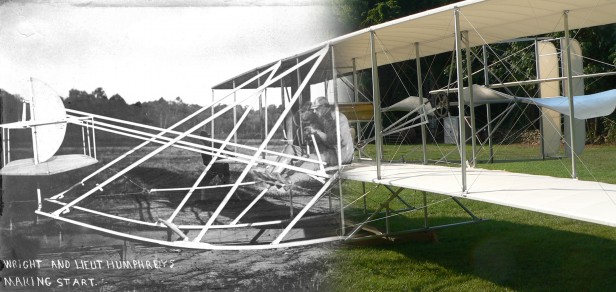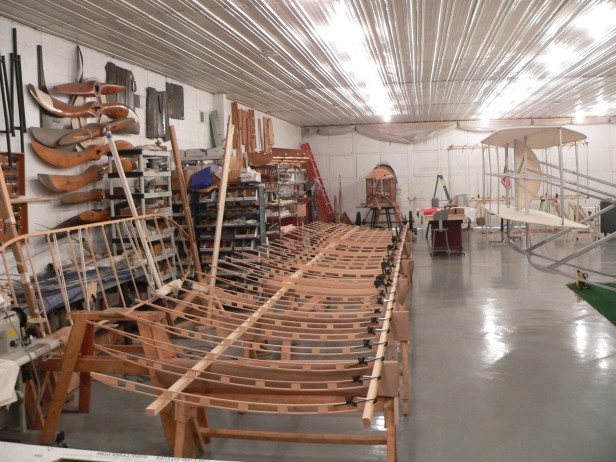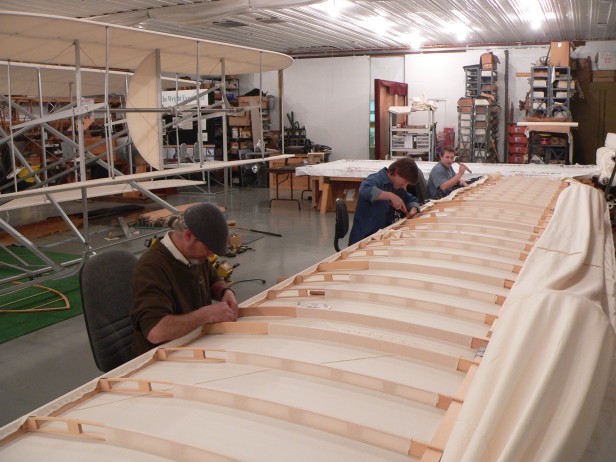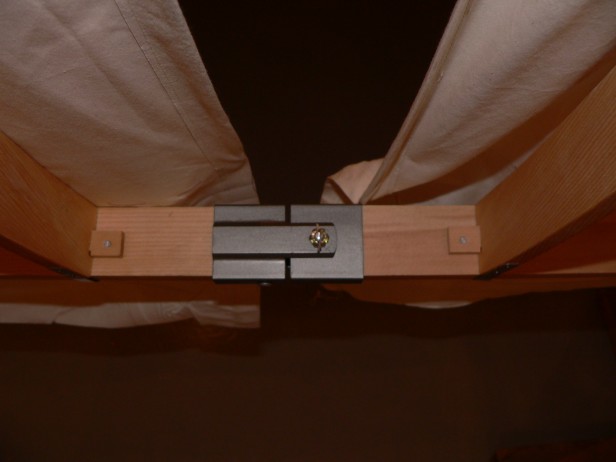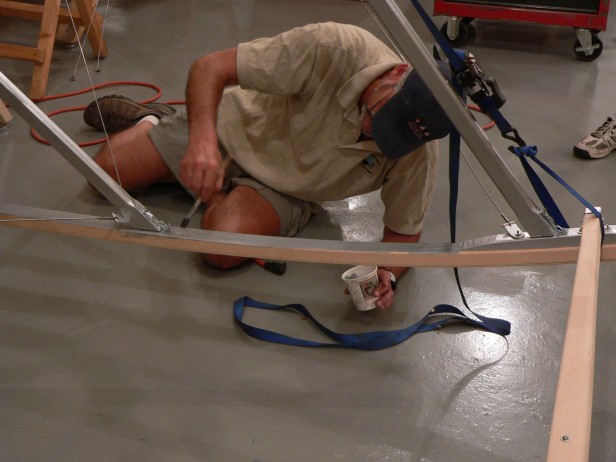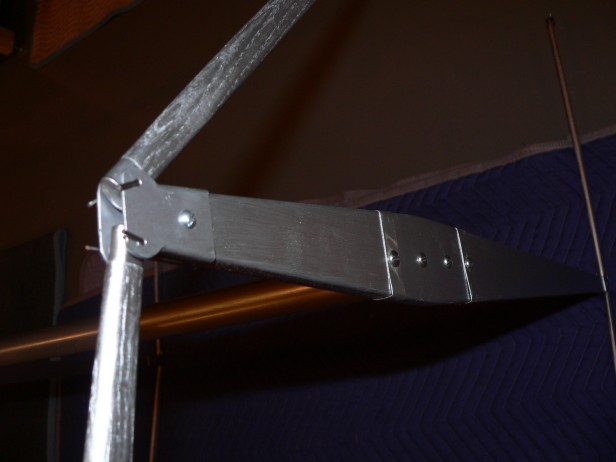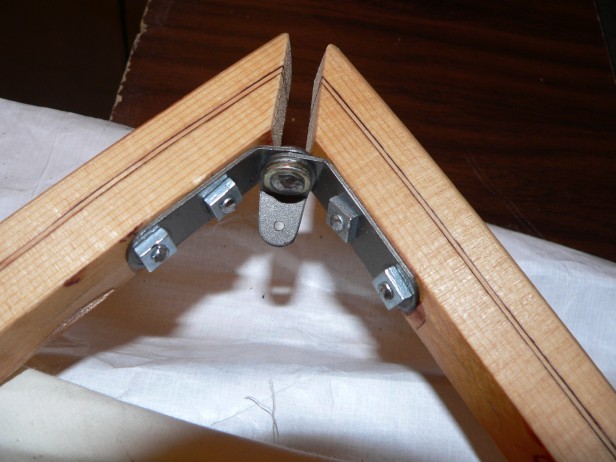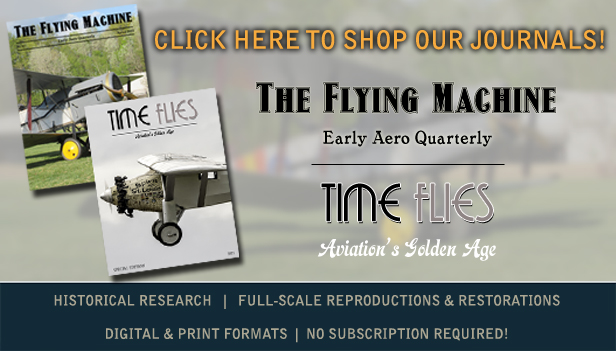The Wright Experience in Warrenton, Virginia is home to an outstanding collection of Wright aircraft reproductions created over 25 years of meticulous study into Wilbur and Orville Wright’s engineering and fabrication practices. The image seen above, showing a period photograph blended with a Wright Experience reproduction, is said to illustrate the team’s mission statement.
The pedigree of our research is the few existing artifacts that exist in museums, period photographs and the few surviving aircraft that were “restored” in the past to prevailing standards at the time. There are no blueprints for Wright aircraft. Using period photographs and CAD we have been able to recreate for reproduction most of the Wright aircraft. This effort incorporates the orientation of each piece of hardware to match the period photos, the correct fabric, the correct dimensions and original method of construction with new materials the same as the original materials. Never has there been an attempt to modify, improve or change in any way what exists in the photos.
Thanks to the generosity of Wright Experience team member E.Scott Rawlings, we are sharing a collection of images detailing many of their machines, which are currently available for sale.
Part 1 of this series examined the team’s 1902 Wright Glider, while part 2 featured their outstanding replica of the 1909 Military Flyer. This week we will continue our look at the 1909 machine, focusing on its construction and the painstaking efforts the team has made to create the most historically accurate aircraft possible.
Above: Wing parts are mocked up to check layout and fit.
Above: Fabric is stretched and nailed to leading edge spar.
Above: Completed wing spar hinges and other internal details.
Above: Top of wing fabric is tensioned and stitched.
Above: Upper wing finished and the lower wing started.
Above: No details are overlooked – the muslin, the number and length of stitches, thread weight, tack size and spacing; all supported by years of research and photographic documentation since the Wrights left no blueprints.
Above: Painted as the Wrights did. Everything was painted silver to inhibit industrial espionage since cameras of the period (ca. 1900) could not photograph a silver object well enough to distinguish its shape, thereby preventing others from copying the Wrights’ designs.
Above: Front rudder lever arm. Even the screw slots are oriented to photographic evidence, as are the bent hinge pins.
Above: Front rudder hinge detail. The Wrights would peen many of the the bolts to secure the nuts.

